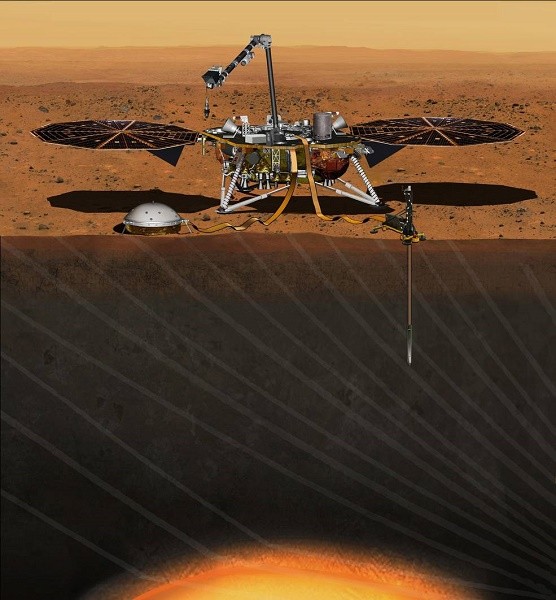By Ana Verayo, | March 10, 2016

NASA has set a new launch opportunity, beginning May 5, 2018, for the InSight mission to Mars.
Before NASA sends humans to Mars by the 2030s, the space agency is set to launch its Interior Exploration using Seismic Investigations, Geodesy and Heat Transport (InSight) mission supposedly this month, which is now moved to May 2018 where the probe will arrive on the Red Planet on November 26, 2018.
Like Us on Facebook
NASA announced on Wednesday that InSight is now targeting a May 5, 2018 launch window, since this month's launch was delayed yet again. The original launch date was last December, however NASA suspended initial launch preparations due to a vacuum leak in the probe's main science instrument.
The probe's main mission involves the InSight lander drilling some 16 feet into the surface of Mars which can provide crucial scientific data. This new data can help scientists understand better and determine how rocky planets like Earth, formed and evolved through time.
For this particular mission, NASA is collaborating with Centre National d'Études Spatiales (CNES) which is France's space agency. According to John Grunsfeld of NASA's Science Mission Directorate, the science goals for InSight has been compelling and now, NASA and CNES are planning carefully to overcome these technical challenges. Planetary scientists have been longing to understand the interior of Mars for decades, which is why NASA aims to launch this pivotal mission in 2018.
NASA says that these technical challenges have already been addressed by NASA's Jet Propulsion Laboratory where mission scientists will redesign and build a new vacuum enclosure for the Seismic Experiment for Interior Structure (SEIS), to meet the required qualifications. This is the instrument that failed during the initial launch of the probe last December where CNES will now handle necessary testing for instrument level integration.
This two year delay can be costly for NASA and CNES which is now being assessed by officials. NASA says that this estimate will be released in August, when arrangements are finalized with the launch vehicle provider. NASA also adds that its main goal for sending humans to Mars is still set by 2035.
Apart from NASA, other space agencies are also in the race to reach the Red Planet. The Russian-European ExoMars probe will be launched next week with European Space Agency's Mars Trace Gas Orbiter along with its Schiaparelli landing module, which will be launched via Roscosmos' Proton rocket from the Baikonur Cosmodrome in Kazakhstan on March 14.
-
Use of Coronavirus Pandemic Drones Raises Privacy Concerns: Drones Spread Fear, Local Officials Say

-
Coronavirus Hampers The Delivery Of Lockheed Martin F-35 Stealth Fighters For 2020

-
Instagram Speeds Up Plans to Add Account Memorialization Feature Due to COVID-19 Deaths

-
NASA: Perseverance Plans to Bring 'Mars Rock' to Earth in 2031

-
600 Dead And 3,000 In The Hospital as Iranians Believed Drinking High-Concentrations of Alcohol Can Cure The Coronavirus

-
600 Dead And 3,000 In The Hospital as Iranians Believed Drinking High-Concentrations of Alcohol Can Cure The Coronavirus

-
COVID-19: Doctors, Nurses Use Virtual Reality to Learn New Skills in Treating Coronavirus Patients







